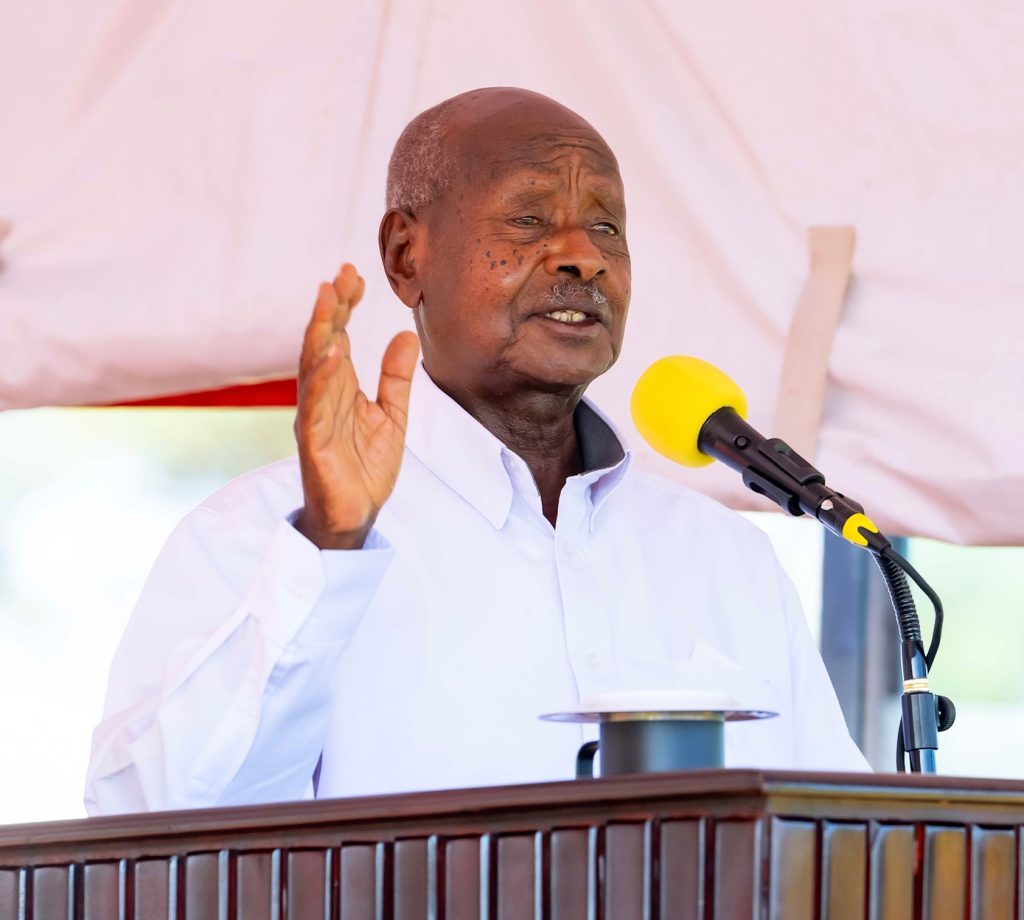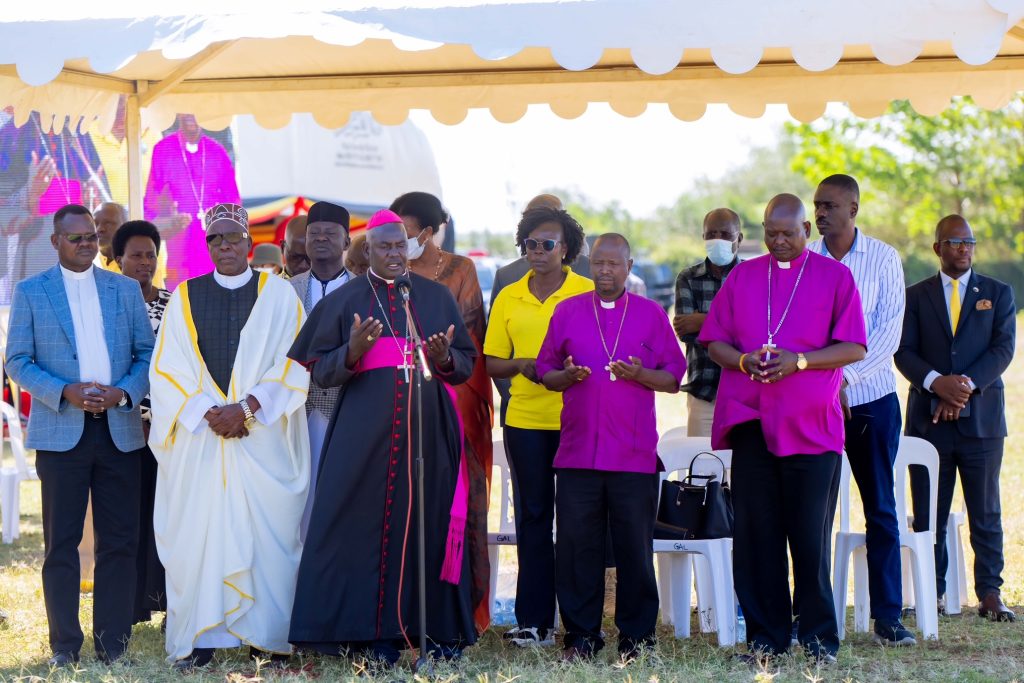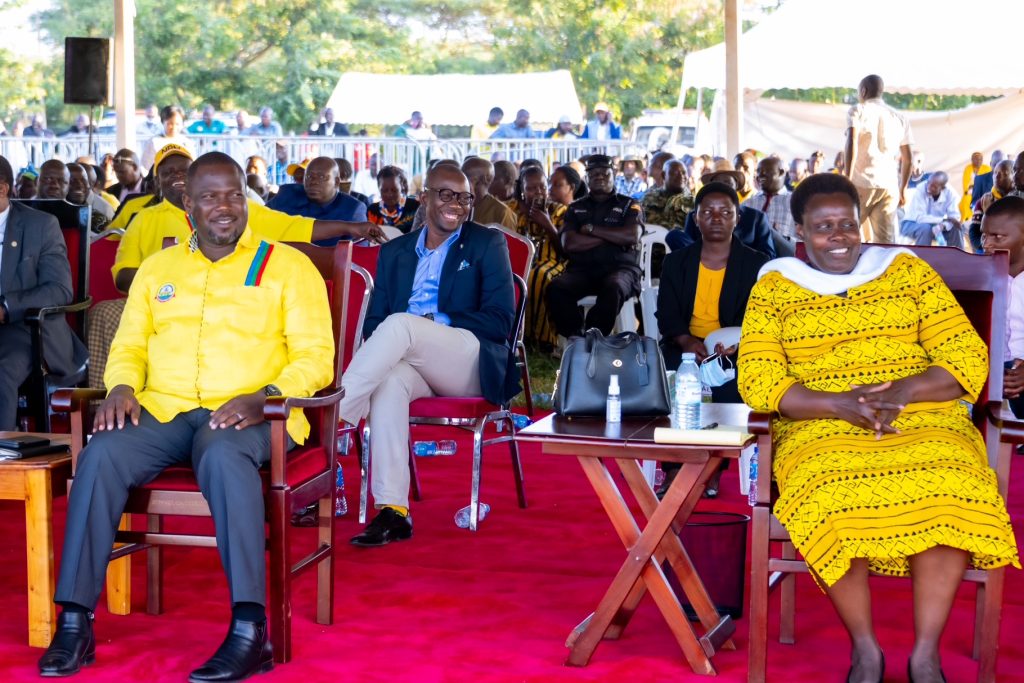According to the President, stabilizing the water situation in Karamoja will not only save the livestock farmers from trekking long distances for water, which leads to insecurity and cattle rustling, but also boost commercial agriculture, which is the only game changer in transforming the region.
“For me, I propose that in what you call the Karamoja strategic plan, a lot of emphasis be paid on dams, two per sub county. Then we can add on peace, which is already there, mindset change, health, education, roads, and electricity. My plan for 1986, when I started the Karamoja Development Agency (KDA), and I put 6 million dollars I got from the European Union, I was telling them to concentrate on water and dams, but they went to do other things and they lost focus,” H.E. Museveni said.
The President made the remarks on Wednesday, December 4, 2024, in Moroto district while addressing leaders from the Karamoja sub region. The meeting was part of President Museveni’s 3-day wealth creation and Parish Development Model (PDM) performance assessment tour in the sub-region which commenced on Tuesday this week.
In 1987, a parliamentary vote established the Karamoja Development Agency to carry out affirmative action for the Karamoja area in sectors such as health, education, and agriculture. The Ministry for Karamoja Affairs, which oversees the coordination of all government initiatives in the area, eventually took its place, nonetheless.

President Museveni told leaders that the formation of the KDA was informed by his past experience in North Ankole and parts of Western Buganda, which don’t have spring water like other parts of Uganda, yet they need it for production.
“But the chiefs in the 1950s developed some communal dams, including Kiruhura, where I come from. Even in Rwakitura, where I got land in 1967, it was because it was near a communal dam. I had to sell another land that was five miles away from a communal dam to buy the one I have, which is near a communal dam. In 1966, I had to walk my cows 5 miles to the water source and five miles to walk back. This is not correct. That’s why I bought land near a communal dam. Now I have developed three dams within my own land. So that was my plan. Karamoja needs peace and water first,” the President stressed.
The meeting consisted of leaders from all the ten districts that include Abim, Amudat, Nakapiripirit, Kotido, Nabilatuk, Karenga, Napak, Kaabong, Kotido, and Moroto.
In their memorandum, the leaders listed a number of challenges that are hindering development, including the high poverty levels, the high illiteracy levels, inadequate water, and poor road networks, among others.

“We shall explore this long list of things to do, but I think now we are moving very well; we are for peace in the whole of Karamoja, and I’m glad that people can now maneuver with their livestock to the nearby water sources, but as one pointed out, that was for small numbers of livestock. For the big numbers, we need a large-scale program of dams. And this is what I’m going to integrate into the national plan,” President Museveni said, adding that he insisted on agriculture because it employs a lot of people, and everybody can participate at different levels of production.
The President informed leaders that, whereas the region has a lot of tourism potential through Kidepo National Park, agriculture should be at the core of supporting the development of tourism.
“When the tourists come, what food would they eat? If they are not getting meat from Rwakitura and eating fruits from Teso or eating fish from Rwampara, how would tourism help the local economy? That’s why I want them to drink the milk of the Karamojong if they are here and the beef, the mutton, the sausages. That is how agriculture becomes the base and feeds into other sectors,” H.E. Museveni explained.
“Even these factories that are here, like the cement and marble factories, the workers there, which food will they buy? So, let us consolidate agriculture, but we are not forgetting the other sectors. To consolidate agriculture, I think the most important thing is water. The other big issue was peace, and I am grateful that you are now cooperating to promote peace, and we shall not allow chaos to come back,” the President further added.

The two dams per sub county will be an addition to the already existing financial support the government sends to districts for water production. This includes Abim Shs. 557 million, Amudat Shs. 667 million, Kaabong Shs. 558 million, Karenga Shs. 306 million, Kotido Shs. 684 million, Moroto Shs. 465 million, Nabilatuk Shs. 721 million, Nakapiripirit Shs. 625 million, and Napak Shs. 634 million, totaling to Shs. 5 billion, and according to President Museveni, in the last 4 years the whole of Karamoja has got Shs. 24 billion for water.
“Since we want to transform Karamoja, I want you to agree with me, and we handle the matters the guerilla way, the way we fought,” the President said, adding that the government has already worked on the major roads in the region and extended electricity to major towns in order to encourage industrialization and also revealed plans to construct a major airport in Karenga near Kidepo National Park.
President Museveni also promised to sponsor the science students from Karamoja in higher institutions of learning.
He informed leaders that for a long time, Africans had been doing agriculture but doing traditional agriculture which limits productivity.

“This time we said no, you must do commercial agriculture for food security and to earn money from other crops, livestock, and Fisheries. And we introduced the four sectors, which include commercial agriculture, industry and manufacturing, services, and ICT,” he said.
“This is the message we have been giving Uganda since the 1960s, telling you that if you want to create wealth, you must be engaged in one of the four sectors that gives you both wealth and jobs at the same time,” he said, giving an example of one Joseph Ojara in the Teso region who was working as a taxi conductor and has now transformed into a successful farmer earning Shs. 3 million per day through selling eggs, totaling to Shs. 90 million in a month and Shs. 1 billion annually.
From the four enterprises he is involved in, including dairy farming, he makes more than a billion a year and remains with Shs. 650 million a year after deducting all the costs.
“So, you can now see that many people are really waking up. My trips are to check on what’s happening in relation to wealth creation activities. But as the Bible says, seek me first the kingdom of heaven, and the rest will be added unto you. Talking about roads and electricity is good, but what is your emphasis? Because like Amos, who is into goat rearing in Amudat on the border with Kenya, there is no tarmac road there, but he is making some wealth because goats don’t need a tarmac road. So, let’s concentrate on wealth creation. We shall deal with all the other issues,” the President noted.
The Vice President, H.E Jessica Alupo, commended President Museveni for all the initiatives to bring Karamojongs into the money economy, which explains their unwavering support for the NRM government.

PDM statistics:
Presenting the status of PDM in Karamoja subregion, the National Coordinator for the initiative, Hon. Ssozi Dennis Galabuzi, informed the meeting that out of the total of Shs. 98.8 billion that was earmarked to benefit the people of Karamoja, a total of Shs. 85 billion has so far been disbursed, remaining only Shs. 13.6 billion that is yet to be disbursed.
“The district that has disbursed all the funds is Napak district, which has given out 100 % of the funds, followed by Abim district at 99.6% with only a balance of 60 million to be given out, meaning 60 people are awaiting to receive their money,” Hon. Galabuzi said, noting that the poorest performers are Kotido district local government and Kotido municipality at 61% and 70%, respectively. The third last is Amudat at 71%.
Hon Galabuzi however decried diversion, the insecurity and extortion from the locals to be put on the list of beneficiaries.
“We’re going to be very vigilant on this because even H.E. the President is very categorical on this, and he has said he does not want bail on this,” he said.

Mr. George Owanyi, the RDC of Nakapiripirit, earlier decried extortion as a major problem affecting the PDM program.
“This is because the people are illiterate, and they fear to talk. In case they talk. The police system releases them (culprits) due to insufficient evidence,” Mr. Owanyi said.
Mr. John Bosco Okello from Abim said the bad weather is among the major problems affecting the recovery of PDM funds.
“We heavily invested in agriculture, but because of the bad weather, farmers have counted losses and have not benefited this financial year. What can we do in case of these natural hazards?” he wondered.

Hon. Galabuzi, in response, said they have studied the weather patterns in Karamoja, and money will start to be sent in January and June for people dealing in crops.
In the same meeting, leaders asked President Museveni to grant amnesty to 21 youths who were arrested in relation to cattle rustling.
At the same ceremony, President Museveni launched Phase 5 of the National Backbone Infrastructure that will extend internet access to the entire Karamoja region.
President Museveni thanked the Chinese government for funding the extension of the national backbone infrastructure in the area.











